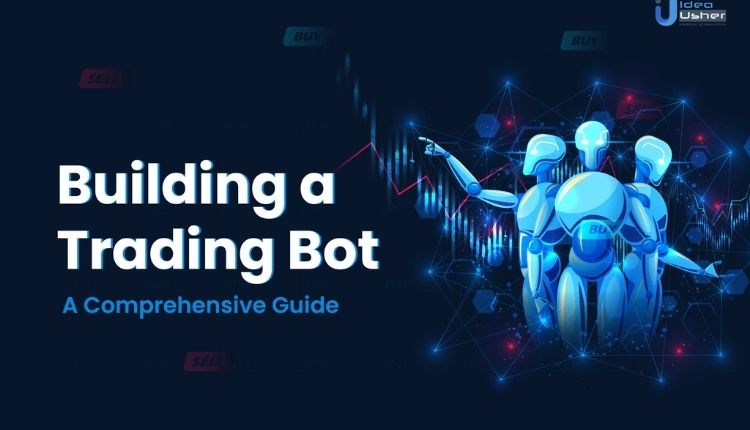In the fast-paced world of financial markets, speed and precision can mean the difference between profit and loss. Manual trading often struggles to keep up with volatile price swings and complex data streams. Automated trading bots and software enable traders to execute strategies without delay, monitor multiple instruments at once, and capture fleeting opportunities. By integrating these tools into your daily routine, you reduce human error, free up time for developing new tactics, and ultimately boost your overall profitability.
- Increasing Productivity with Algorithmic Precision
- Leveraging Artificial Intelligence for Market Analysis
- Streamlining Repetitive Tasks to Save Time
- Reducing Emotional Bias with Systematic Execution
- Collaborative Innovation and Professional Platforms
- Selecting the Right Trading Bots and Software
- Implementation Tips and Best Practices
- Conclusion
Increasing Productivity with Algorithmic Precision
One of the strongest reasons to use automated trading solutions is their ability to follow predefined algorithms with consistent accuracy. Human traders can hesitate or act emotionally, but bots execute orders strictly according to coded rules. These algorithms process millions of data points in milliseconds, identify emerging trends, and place orders in real time when specific conditions are met. Most platforms include backtesting features, so you can validate your approach against historical data before risking real capital. This sort of validation not only builds confidence in your method but also reduces the trial‐and‐error phase, making your workflow far more efficient.
Leveraging Artificial Intelligence for Market Analysis
Artificial intelligence has reshaped how traders analyze markets by introducing adaptive, self-learning models. AI-based bots can digest price action, sentiment indicators, economic news, and social media signals. They then adjust their parameters based on performance feedback. Unlike static, rule-based scripts, these intelligent models evolve with changing market conditions. For example, machine learning techniques can uncover subtle correlations between currency pairs or detect volatility patterns that signal upcoming breakouts. Predictive analytics built on neural networks and regression models can forecast potential price shifts, equipping you with a strategic advantage that manual analysis alone cannot deliver.
Streamlining Repetitive Tasks to Save Time
Routine tasks such as chart watching, order entry, and stop-loss adjustments can consume large chunks of a trader’s day. Automation takes over these chores without fatigue or distraction. You can schedule bots to open and close positions at specific market times, manage multiple strategies in parallel, and rebalance portfolios according to predefined risk limits. Some platforms support conditional orders like trailing stops, which follow the market at a fixed percentage or price distance. By reducing manual overhead, you reclaim hours each week for research, strategy refinement, or even rest, confident that your positions are managed with precision.
Reducing Emotional Bias with Systematic Execution
Emotions are a trader’s worst enemy. Fear can prompt premature exits, while greed may cause you to cling to losing positions too long. Automated systems eliminate emotional interference by executing trades solely on rule sets. Whether the market surges or plunges, your bot will manage entries and exits impartially. This disciplined approach prevents overtrading, blocks revenge-driven transactions, and stops you from making gut-feeling mistakes that erode returns. When volatility spikes, you can trust the algorithm to handle orders consistently and maintain the objectivity that human traders often lose.
Collaborative Innovation and Professional Platforms
As demand for automation grows, community-driven environments have flourished. Shared platforms unite traders, quantitative analysts, and software developers to exchange strategy blueprints, coding techniques, and performance insights. This collaborative spirit accelerates the creation of robust automated systems. Many Forex prop firms now offer clients proprietary bots, mentorship, and benchmarking tools designed to meet rigorous performance targets. Leveraging these professional resources grants you access to collective expertise and time-tested approaches that would be difficult to develop solo.
Selecting the Right Trading Bots and Software
With a proliferation of options on the market, evaluating the right solution is critical. Consider these leading choices:
- MetaTrader 4 and 5 (MT4/MT5): Industry staples for forex traders, featuring customizable Expert Advisors, strategy testers, and a vast user community.
- NinjaTrader: Renowned for advanced charting capabilities, an expansive developer ecosystem, and support for futures and forex brokers.
- TradeStation: Offers EasyLanguage for custom scripting, built-in backtesting, and direct access to multiple asset classes.
- 3Commas: A cloud-based platform tailored to cryptocurrency exchanges, complete with smart trading terminals and copy-trading functionality.
- HaasOnline: Provides scriptable bots for digital assets and traditional markets, plus simulated environments for rigorous stress testing.
Evaluate each tool’s fee structure, compatible markets, customization options, and support network before you commit.
Implementation Tips and Best Practices
To harness the full power of automation, follow these best practices:
- Start conservatively by allocating a small percentage of your capital to live testing.
- Host your software on a virtual private server to ensure continuous operation with minimal latency.
- Monitor performance metrics and log files on a regular schedule to catch anomalies early.
- Use version control for strategy code, documenting every change so you can rollback if necessary.
- Stay active in developer forums and update your platform when new features or risk-management tools become available.
Conclusion
In today’s competitive trading landscape, automating your workflow with precision bots and advanced software is no longer optional for serious market participants. From algorithmic execution and AI-driven analysis to emotion-free decision making and collaborative development, these tools unlock efficiency, consistency, and scalable profitability. By selecting the right platform, adhering to implementation best practices, and engaging with professional communities, you position yourself for ongoing success. Embrace automation as your most reliable ally in navigating complex markets and achieving sustainable returns.

